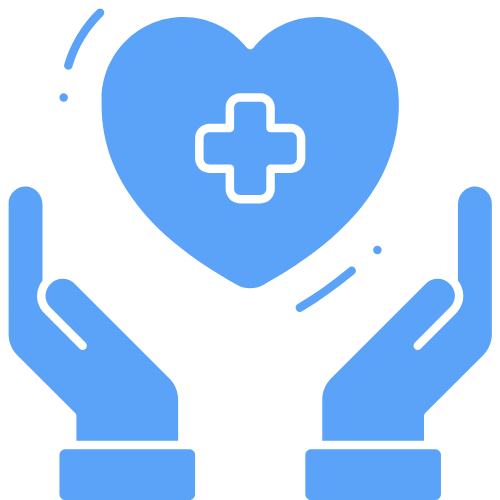Family therapy and individual therapy differ in several key ways that shape your therapeutic experience. While individual therapy focuses on your personal growth and internal struggles, family therapy addresses the whole system of relationships and patterns within your family unit. You’ll notice differences in session dynamics, communication approaches, and conflict resolution strategies with family therapy involving multiple participants and complex interactions. Understanding these distinctions can help you make the most informed choice for your healing process.
The Core Focus: System vs. Individual

While both therapeutic approaches offer valuable paths to healing, family therapy and individual therapy differ fundamentally in their core focus. When you enter family therapy, you’ll find that it addresses systemic issues by examining the interconnected relationships between all family members, rather than concentrating on one person’s struggles. This therapeutic environment creates a safe space for expressing feelings without judgment.
Unlike individual therapy, which investigates deep into your personal challenges and growth, family therapy analyzes how each member’s actions and behaviors influence others within the family unit. This approach is particularly effective in helping families cope with life-changing events like separation, divorce, or trauma. You’ll work together to improve communication patterns, resolve conflicts, and create a more supportive environment. The goal isn’t to “fix” one person but to strengthen the entire family system by understanding shared problems and developing collective solutions that benefit everyone involved.
Multiple Dynamics vs. Single Client Approach
Because family therapy involves numerous participants, you’ll encounter a more complex web of interactions compared to individual therapy’s single-client focus. The emotional dynamics create a rich tapestry of relationships that require careful navigation and skilled intervention. Family systems therapy focuses on identifying family roles and patterns to better understand the underlying dynamics. Counselors often examine triangular relationships when observing family conflicts and alliances. You’ll need to balance diverse expectations, motivations, and family roles while fostering healthy communication patterns. Unlike individual therapy’s linear approach, family therapy requires you to track and influence multiple relationship patterns simultaneously, making it essential to maintain neutrality while promoting constructive change within the family system.
| Aspect | Family Therapy | Individual Therapy |
|---|---|---|
| Alliances | Multiple family alliances to manage | One therapeutic alliance |
| Assessment | Simultaneous evaluation of relationships | Focus on single client |
| Conflict | Complex interpersonal dynamics | Client-therapist dynamics |
| Intervention | Active management of multiple perspectives | Direct work with one client |
Role Complexity in Family Sessions

Since family therapy sessions involve multiple participants, you’ll encounter intricate role dynamics that create layers of complexity beyond traditional one-on-one therapy. Role identification becomes critical as you navigate relationships between multiple family members, each carrying unique positions like caretaker, peacemaker, or rebel within the system. Major life transitions can significantly impact and reshape these established family roles. Active listening skills are fundamental to understanding and addressing the complexities of each family member’s perspective.
Unlike individual therapy, you’ll need to maintain neutrality while managing multiple alliances and fostering emotional awareness among all participants simultaneously. You’ll employ a range of therapeutic approaches, from strategic interventions to narrative techniques, helping families understand how their roles impact communication patterns. Through structured sessions and engagement tools like genograms and role-playing exercises, you’ll guide families in developing more flexible roles and healthier interaction patterns, ultimately working towards improved family functioning and relationships.
Treatment Goals and Expected Outcomes
While individual therapy focuses on your personal growth, family therapy emphasizes how your progress intertwines with your entire family system’s well-being. During sessions, you’ll focus heavily on active listening skills. You’ll uncover that healing family dynamics requires everyone’s participation, as each member contributes to both challenges and solutions. Through unified therapeutic work, you’ll develop a stronger support network where every family member understands their role in maintaining positive change and fostering collective resilience. The therapeutic process helps members learn to express emotions constructively while working through their shared challenges together.
Collective vs. Personal Growth
Although both therapy approaches aim to facilitate positive change, family therapy and individual therapy differ considerably in their treatment goals and expected outcomes. While individual therapy focuses on your personal growth and emotional well-being, family therapy emphasizes collective identity and shared experiences within the family unit.
In family therapy, you’ll work on strengthening relationships, improving communication patterns, and developing resilience as an interconnected system. The changes you make affect everyone in your family, creating lasting transformations in how you interact and support each other. Initial assessments help determine if family therapy is the right approach, with specialists conducting biopsychosocial evaluations to guide treatment planning. Conversely, individual therapy helps you investigate internal conflicts, develop personal coping strategies, and work through emotional issues in a private setting. Research has shown that utilizing a combination of therapies can significantly decrease the likelihood of relapse in addiction recovery. Understanding these differences can help you choose the approach that best suits your current needs and goals.
Repairing Family Dynamics
The process of repairing family dynamics through therapy requires a thorough understanding of how each family member’s behaviors and emotions interconnect within the system. Unlike individual therapy, family therapy addresses how family roles impact the entire unit’s functioning and focuses on collective healing rather than isolated personal growth.
You’ll find that family therapy sets clear treatment goals aimed at fostering healthier communication patterns and establishing appropriate boundaries between members. The emphasis is on emotional healing through direct conflict resolution and strengthening family bonds. When one member makes positive changes, it creates a ripple effect throughout the family system. This approach helps prevent relapse by creating a supportive environment where everyone learns to work together towards systemic change and lasting well-being.
Building Support Through Unity
Building support through unity in family therapy creates powerful opportunities for transformative change that individual therapy often cannot achieve. When you participate in family therapy, you’ll uncover how family unity becomes a catalyst for healing and growth. Through collaborative goal-setting and unified coping strategies, you’ll strengthen emotional support networks that benefit everyone. The integration of lifestyle interventions promotes lasting positive changes in family dynamics and routines.
Setting healthy boundaries within the family unit helps establish clear expectations and responsibilities for everyone involved in the therapeutic process. Your family will experience transformative change through:
- Learning to communicate effectively as a unified team
- Developing shared strategies for managing conflicts
- Creating a nurturing environment where everyone feels valued
- Building collective resilience against future challenges
Conflict Management Strategies
When conflicts arise during therapy sessions, you’ll need distinct strategies for managing tensions between family members versus addressing individual emotional triggers. In family sessions, you can employ techniques like “I-statements” and time-outs to regulate heated exchanges, while helping members practice active listening and emotional validation. Individual sessions allow you to investigate personal reactions and develop coping mechanisms that you can later apply to group dynamics, creating a bridge between personal growth and family harmony. Building a supportive environment where repair is welcomed helps promote lasting healing. Professional guidance helps families develop constructive problem-solving skills that can be utilized long after therapy ends.
Addressing In-Session Family Disputes
Managing in-session family disputes requires therapists to implement strategic interventions that promote emotional safety while facilitating constructive dialogue. When in-session emotions run high, therapists use rapid emotional regulation techniques while respecting established family roles and cultural dynamics.
During heated moments, you’ll notice therapists employ these key interventions:
- Setting immediate ground rules for respectful communication, including the use of “I” statements and no interruptions
- Implementing deep breathing exercises to help family members regulate heightened emotions
- Using DEARMAN techniques to guide assertive yet respectful expression of needs
- Redirecting blame-focused statements into solution-oriented discussions
The incorporation of Cognitive-Behavioral Family Therapy techniques helps family members identify and modify unhelpful thought patterns that contribute to conflicts.
This approach differs from individual therapy by actively managing multiple perspectives simultaneously while maintaining a balanced, systemic view of the family’s interaction patterns.
Group Tension Resolution Methods
Group tension resolution methods expand upon basic in-session dispute management by incorporating structured conflict management strategies that serve both immediate and long-term therapeutic goals. You’ll find these methods particularly effective when maneuvering complex family dynamics that can’t be addressed in individual therapy.
During family sessions, you can employ specific resolution techniques like reflective listening and group sharing circles to validate each member’s perspective. You’ll notice how mediation and facilitation help transform destructive patterns into constructive dialogue. When tension escalates, breathing exercises and journaling provide immediate relief while building lasting coping skills.
Unlike individual therapy, these group tension resolution methods create opportunities for real-time practice of conflict management skills, allowing families to develop healthier communication patterns together rather than in isolation.
Therapeutic Techniques and Interventions

While both family and individual therapy share some common ground, their therapeutic techniques and interventions differ markedly in approach and implementation. You’ll find that family therapy employs unique methods designed to address group dynamics and interpersonal relationships, rather than focusing solely on individual concerns.
Here’s how family therapy’s intervention methods stand apart:
- You’ll participate in genogram mapping to visualize multigenerational patterns
- You’ll engage in family sculpting exercises to physically represent relationships
- You’ll practice circular questioning to examine different family perspectives
- You’ll work through structured role-playing activities to understand each other’s positions
These therapeutic techniques help create lasting change by addressing the family system as a whole, rather than treating individual symptoms in isolation. They’re specifically designed to improve communication, strengthen relationships, and resolve conflicts within the family unit.
Support Network Development
Building a strong support network adds another essential dimension to the therapeutic process, extending beyond the techniques used in therapy sessions. While individual therapy mainly focuses on developing a one-on-one therapeutic relationship, family therapy naturally creates broader support system opportunities by involving multiple family members.
You’ll find that family therapy excels at network expansion through its inherent multi-person approach. Your therapist will help identify existing support networks within your family unit and guide you in strengthening these connections. You’ll learn effective communication strategies that improve relationships both inside and outside the family system. This collaborative approach also helps overcome common barriers like social anxiety or trust issues. Unlike individual therapy, family sessions provide immediate opportunities to practice relationship-building skills with people who matter most in your life.
Communication Patterns and Expression
Communication patterns and expression differ considerably between family and individual therapy settings, with family sessions offering unique opportunities to address complex interpersonal dynamics in real-time. While individual therapy focuses on one person’s communication styles, family therapy navigates multiple perspectives simultaneously, requiring emotional validation of all members’ experiences.
In family therapy, you’ll witness:
- Multiple family members expressing emotions through verbal and non-verbal cues simultaneously
- Real-time conflict resolution as disagreements emerge during sessions
- Power dynamics shifting as different family roles come into play
- Immediate feedback from other members when someone shares their feelings
These dynamics create rich opportunities for healing, as you’ll learn to communicate more effectively while observing how your words and actions impact others. The therapist guides these interactions, helping transform destructive patterns into constructive dialogues.
Long-Term Impact on Recovery
Research consistently demonstrates that family therapy produces more enduring recovery outcomes compared to individual therapy alone, primarily because it transforms the entire family system into a sustainable support network.
You’ll find that the long-term benefits of family therapy extend beyond individual improvement, creating lasting systemic change that affects everyone involved. When your family participates in therapy together, you’re not just addressing one person’s challenges you’re developing collective strategies that boost recovery and prevent relapse. This all-encompassing approach helps break unhealthy patterns across generations while building resilience through improved communication and problem-solving skills.
Frequently Asked Questions
How Long Does a Typical Family Therapy Session Last Compared to Individual Therapy?
Did you know that family therapy sessions can run up to 90 minutes? That’s because you’ll need more time to address multiple perspectives and family dynamics. Your family therapy session duration typically ranges from 45-90 minutes, while individual therapy usually lasts 30-60 minutes. The therapy frequency also differs – you’ll likely attend family sessions less often, usually once or twice weekly, allowing time to practice new communication patterns between meetings.
What Happens if One Family Member Refuses to Participate in Therapy?
When a family member refuses therapy, you’ll face participation challenges that can affect general family dynamics. However, you’re not without options. You can still make progress by working with willing family members using Bowenian therapy approaches, which don’t require everyone’s presence. You’ll learn to create positive changes that may influence the non-participating member over time. Your therapist can help develop strategies to manage relationships and communication patterns despite limited participation.
Is Family Therapy Covered by Most Insurance Plans?
Many insurance plans do cover family therapy, but you’ll need to verify your specific coverage details. Insurance coverage typically requires a mental health diagnosis and may limit the number of sessions. You’ll want to check your plan’s therapy costs, including deductibles and copays. It’s helpful to contact your insurance provider directly to understand pre-authorization requirements and in-network providers. Some plans might offer better coverage through employer-sponsored or government programs.
Can Children and Teenagers Benefit From Both Family and Individual Therapy?
Yes, you’ll find that children and teenagers can greatly benefit from combining both therapeutic approaches. While individual therapy gives them a private space to work through personal challenges, family therapy helps improve general family dynamics. You’ll see better results when both methods work together – your child can develop personal coping skills while simultaneously strengthening family relationships. This dual approach often creates more extensive healing and lasting positive change.
How Often Should Families Attend Therapy Sessions for Optimal Results?
You might think there’s a magic number for therapy sessions, but it’s not that simple! Your family’s unique needs and challenges will determine the ideal session frequency. Initially, you’ll likely attend weekly or bi-weekly sessions to build momentum and establish new patterns. As you progress, you’ll work with your therapist to adjust the schedule. Remember, your family commitment to consistent attendance matters more than the exact frequency – it’s about staying engaged in the healing process.
















